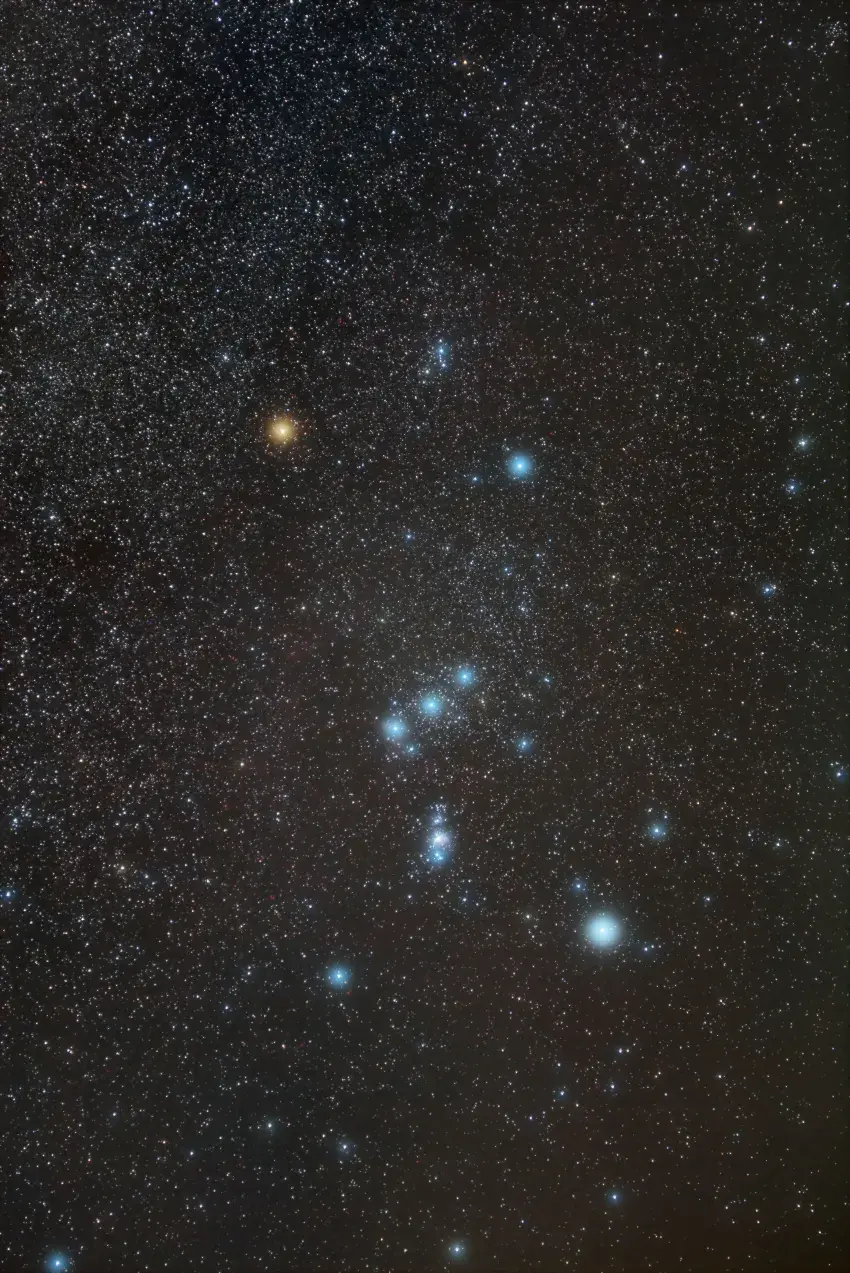The humid air made the stars bloat and look very pretty.
Orion is one of the most well-known and easily recognizable constellations in the night sky. It is visible from both the northern and southern hemispheres and holds a prominent place in various mythologies and cultures. Here are some key features and information about the Orion constellation:
Visibility
Orion is typically visible in the night sky from late autumn to early spring, depending on your location and the time of night.
It is often best seen during the winter months in the northern hemisphere and during the summer months in the southern hemisphere.
Shape and Stars
Orion is known for its distinctive shape, often described as an hourglass or bowtie.
The constellation is marked by several bright stars, including Betelgeuse (a red supergiant), Rigel (a blue-white supergiant), Bellatrix, and Saiph. The three stars forming Orion's Belt are Alnitak, Alnilam, and Mintaka.
Mythology
In Greek mythology, Orion was a giant huntsman and a son of Poseidon, the god of the sea. There are various myths associated with Orion, including his pursuit of the Pleiades and his eventual placement in the stars.
Orion is often depicted in the sky with a raised arm, holding a club, and with a shield on his leg.
Orion's Belt
The three bright stars in a straight line that form Orion's Belt are one of the most recognizable features of the constellation. They are easily visible even in light-polluted areas.
Nebulae
Orion is home to several notable deep-sky objects, including the Orion Nebula (M42/M43), a stellar nursery that is visible to the naked eye. The Orion Nebula is one of the brightest and most studied nebulae in the night sky.
Star Formation
The Orion constellation is an active region of star formation. The stars within Orion are at varying distances from Earth, and they are not physically related to each other. However, their apparent grouping from our perspective forms the recognizable pattern.
Cultural Significance
Orion has significance in various cultures throughout history. It has been used for navigation and timekeeping, and different civilizations have associated it with different myths and stories.
Celestial Hunter
The constellation's name, Orion, is derived from Greek mythology, where Orion was a skilled and mighty hunter.
Orion's striking appearance and rich cultural associations make it a favorite among stargazers and astronomers. Whether you're a seasoned observer or a beginner, identifying Orion in the night sky can be a rewarding and captivating experience.

